Return of the Fish
Published 21 years, 8 months past
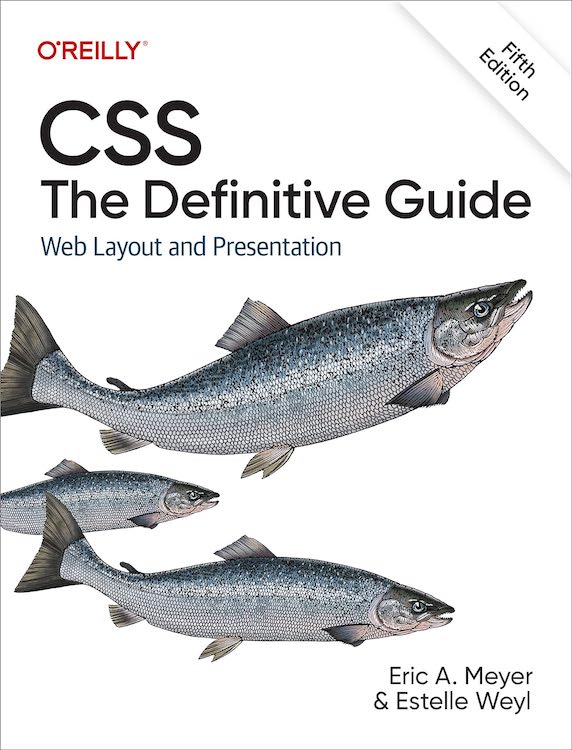 I have in my hands a physical copy of the second edition of Cascading Style Sheets: The Definitive Guide, bound with a RepKover lay-flat spine and everything. So I figure it should be shipping out to folks within the next week or two. If you’ve pre-ordered, there ought not be long to wait! (And if you haven’t, then what are you waiting for?)
I have in my hands a physical copy of the second edition of Cascading Style Sheets: The Definitive Guide, bound with a RepKover lay-flat spine and everything. So I figure it should be shipping out to folks within the next week or two. If you’ve pre-ordered, there ought not be long to wait! (And if you haven’t, then what are you waiting for?)
As I mentioned yesterday, the ‘diagnosis’ favelets I used during my SXSW04i presentation generated a lot of comment, so I now have the underlying style sheets on a “Favelets” page in my “Tools” section. For those of you who know how favelets work, just grab any or all of the style sheets you want and go for it. For those who need some assistance, I wrote a “Favelet Creator.” You plug in the URL of a style sheet you want to have applied to whatever page you’re viewing and the name of the favelet as you want it to appear in your toolbar. Then you drag the resulting link into your favorites toolbar.
All this really does is create a javascript: link that, when invoked, will dynamically write a link element into the head of whatever document you’re viewing. That link points to a style sheet, and so the styles are applied. As an example, you could point it to a style sheet that sets borders for tables and table cells. When you click on the favelet, all of the tables and table cells in the currently-viewed page become visible. Figuring out exactly how a table-based page is laid out thus becomes a snap.
So if you don’t like the styles I created, you can write your own (or modify the ones I provided) and create your own diagnostic style sheets. The favelet creator should make it even simpler. Either way, I hope these will be helpful.
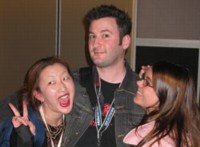 , I chatted with
, I chatted with 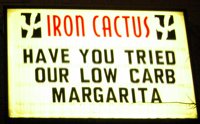 That’s right, folks, they take out the alcohol and pass the inflated profit margin on to you! It’s kind of a brilliant sales tactic, really, and I applaud them for overcharging customers in an honest yet sneaky way.
That’s right, folks, they take out the alcohol and pass the inflated profit margin on to you! It’s kind of a brilliant sales tactic, really, and I applaud them for overcharging customers in an honest yet sneaky way.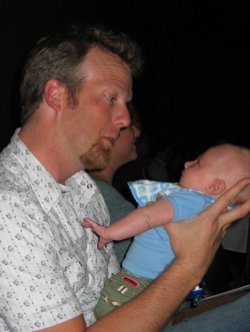 It was kind of odd to watch somebody else’s child be subjected to a round of Pass The Baby, and fun to be able to watch the holders without having to worry so much about the baby. (It’s a parent thing—when someone else is holding your baby, you watch the baby to see what it does. And to make sure it doesn’t get dropped.) Arlo never did make it over to me, but that’s okay. I’d far rather hold Carolyn. I miss her, and I miss Kat.
It was kind of odd to watch somebody else’s child be subjected to a round of Pass The Baby, and fun to be able to watch the holders without having to worry so much about the baby. (It’s a parent thing—when someone else is holding your baby, you watch the baby to see what it does. And to make sure it doesn’t get dropped.) Arlo never did make it over to me, but that’s okay. I’d far rather hold Carolyn. I miss her, and I miss Kat.
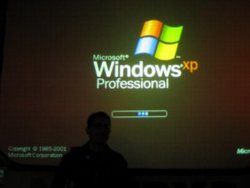 Thanks to the folks at frog design for giving us one of the funniest moments of the conference to date. (
Thanks to the folks at frog design for giving us one of the funniest moments of the conference to date. (